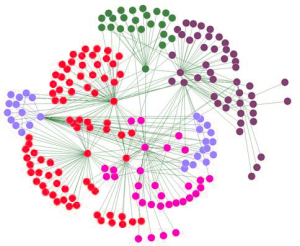There is a lot of discussion about “digital” currently and how it influences or impacts leadership.
Both the terms “leadership” and “digital” can be interpreted in different ways. Before we get to the details, it first helps to get to a shared understanding about what digital means.
A July 2015 McKinsey article stressed the importance of business leaders having a clear and common understanding of exactly what digital means to them and, as a result, what it means to their business. The authors believed that digital should be seen less as a thing and more a way of doing things. The three attributes of digital are: creating value at the new frontiers of the business, creating value in the processes that execute a vision of customer experiences, and building foundational capabilities (digital mindset and technology) that support the entire structure.
The authors of the book, “Leading Digital” share the definition of digital transformation as the use of digital technology to radically improve the performance and/or the reach of a company. Digital technology is radically changing and challenging businesses in various sectors, many times at high speed. According to them, the time to start digital mastery is now. The longer you wait as a firm, the tougher it will become and you will fall behind.
So, what do leading experts like Manfred de Vries, Josh Bersin, Zenger Folkman, Charlene Li think about leadership in the digital world?
- Digital is not technology but a different way of thinking.
- The traditional hierarchical model of leadership is disintegrating.
- Leadership no longer defined by what a single leader does – it is more about the ability to collaborate, motivate and manage networks.
- It is also about decentralizing leadership and connected networks of teams. Leadership behavior needs to be distributed throughout an organization.
- Employees want more ownership rather than to follow instruction.
- Leaders have to be good at the coaching part of their job.
- Key Behaviors in the digital environment – Speed, Collaboration, External Sensing, Being Inclusive, Creating Open Environment.
- There will be gaps in the leadership pipeline in this environment and due to the radical changes. It is very important to identify the gaps and work on them.
- Being organized correctly with the right organization structure, right jobs, right people in those jobs are critical factors for success.
- Leadership development professionals should have a strong context about what is going on in their external and internal environments. Developing leaders is about looking at the whole system, not just L&D or HR.
- Organizations which take leadership development seriously outperform their competition. Strong leadership requires continuous development.
Charlene Li’s (Altimeter Group) simple yet powerful (digital) engaged leader framework highlights three core elements worth trying out for any aspiring leader.
1. Listening at scale – Leaders can listen and respond, not to just one person, but many at a time. It is about listening to support your goals.
2. Sharing to shape people’s mindsets and actions – Sharing forges connections with followers that improves relationships, achieve goals, and amplifies a leader’s influence. The big shift that leaders have to make is to be more comfortable with openness. Sharing has to help spread authenticity, emotion and point of view.
3. Engaging to transform – Leaders have to use two-way dialogue that motivates and mobilizes followers to take collective action.
What actions will you take for yourself and your organization to become a competent leader in the digital age?
“When you’re a disruptor, you move into your fear, not away…” – Whitney Johnson, Disrupt Yourself
References:
http://www.mckinsey.com/industries/high-tech/our-insights/what-digital-really-means
http://www.slideshare.net/capgemini/didier-bonnet-oow-leading-digital-presentation
http://knowledge.wharton.upenn.edu/article/the-right-leadership-style-for-the-digital-age/
http://knowledge.insead.edu/blog/insead-blog/evolving-leadership-in-the-digital-age-4611
http://zengerfolkman.com/podcast-ep-63-developing-leaders-in-the-digital-age-feat-josh-bersin/
http://www.slideshare.net/INBOUND/ie15-c-charlene-li-final








Recent Comments